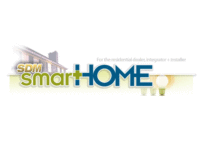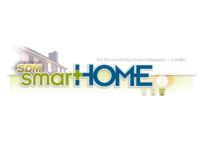Following a three-year downturn, a sustainable recovery for the remodeling industry is expected this year, according to the Leading Indicator of Remodeling Activity (LIRA) released this mid-January by the Remodeling Futures Program at the for Housing Studies of Harvard University. The LIRA projects annual growth in home improvement spending of 6.5 percent by the third quarter of 2011. Professional installation now leads the recovery, as compared to sweat equity do-it-yourself (DIY) during the hard times; and there is greater customer emphasis on energy-sensitive projects such as home energy management and green home efforts.
“Favorable interest rates, a pickup in home sales, and the strengthening economy should lead to healthy gains in remodeling spending this year,” says Eric Belsky, managing director of the
There still are concerns.
“After an initial burst in activity, the recovery may lose some steam later in the year as continuing problems with weak housing prices and large numbers of distressed properties keep home improvement gains in check,” says Kermit Baker, director of the Remodeling Futures Program. “But the overall trend is for continued growth in 2011.”
The LIRA estimates national homeowner spending on improvements for the current quarter and subsequent three quarters. The indicator, measured as an annual rate-of-change of its components, provides a short-term outlook of homeowner remodeling activity and is intended to help identify future turning points in the business cycle of the home improvement industry.
Further out, spending on home improvement is projected to increase at an inflation-adjusted 3.5 percent average annual rate over the next few years. While reasonably low, it represents a measureable recovery from the recent downturn.
Among the current themes:
- Projects with longer paybacks will appeal to the growing number of homeowners who are staying put.
- There will be more activity in and the so-called Rustbelt as movement of homeowners to the has slowed.
- Market fundamentals such as housing stock, age of homes, and income gains of homeowners making improvements indicate increases in remodeling spending.
- Metropolitan areas with rising house prices such as Los Angeles are better positioned for an upturn in remodeling activity.
- In the next five years, remodeling spending will shift from upper-end discretionary projects to replacements and systems upgrades. Among opportunities: underinvestment in distressed properties, lower mobility, changing migration patterns, and the rise of environmental awareness.
In another measure that can impact electronic systems contractors, the Security Industry Business Confidence Index, conducted quarterly for the Security Industry Association (SIA), found in its Fourth Quarter 2010 poll that stability may be a better indicator of the health of the security industry — residential and nonresidential — than any roller coaster ride of housing and the economy these days.
The Fourth Quarter 2010 Index of 74.9 compares almost exactly to the Third Quarter 2010 Index of 74 and continues to look better than the Second Quarter Index of 58.5 or the First Quarter Index of 69. Things, no doubt, continue to look up. That’s seen in a Business Confidence Index of 59 in the Fourth Quarter 2009 and Third Quarter’s even weaker 49.
Among Fourth Quarter 2010 SIA Business Confidence Index results, 78 percent of respondents feel that current conditions are good to excellent as compared to 70 percent who believed current conditions are good to excellent last quarter.
In addition, 88 percent of Index respondents feel things will be a little better or much better in the next three months compared to 80 percent who felt things will get better in the previous survey. Looking into the future, 56 percent of the SIA Business Confidence Index respondents see an increase in capital spending over the next 12 months.
Percent of Respondents Saying They Will Increase Activity or Dollars In:
|
|
4thQ 2010 |
3rdQ 2010 |
2ndQ 2010 |
1stQ 2010 |
4thQ 2009 |
|
New Orders |
84% Increase |
80% Increase |
74% Increase |
75% Increase |
60% Increase |
|
Product Sales |
84% Increase |
65% Increase |
67% Increase |
72% Increase |
57% Increase |
|
New Product Intro |
44% Increase |
75% Increase |
33% Increase |
69% Increase |
63% Increase |
|
Employees/Hours |
72% Increase |
50% Increase |
60% Increase |
54% Increase |
39% Increase |
|
Capital Equip $s |
40% Increase |
50% Increase |
31% Increase |
24% Increase |
21% Increase |
|
|
|
|
|
|
|
Source: Security Industry Business Confidence Index, 4th Quarter 2010




